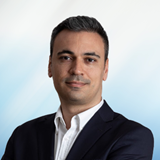Southeast Asia Treaty Organization
Critical minerals, policy, and the energy transition
The Rise and Fall of SEATO: A Cold War Alliance Against Communism in Southeast Asia
The Southeast Asia Treaty Organization (SEATO) was an international organisation formed on 8 September 1954, following the Manila Pact, with the primary purpose of preventing the spread of communism in Southeast Asia. It comprised eight member countries: the United States, United Kingdom, France, Australia, New Zealand, Pakistan (including East Pakistan, now Bangladesh), Thailand, and the Philippines. SEATO was established primarily to block further communist gains in Southeast Asia. The organisation was part of the Truman Doctrine of creating alliances to contain communism. SEATO aimed to promote economic development, social progress, and collective defence in the region. Headquartered in Bangkok, Thailand, it engaged in military exercises, joint training operations, civic action programs, and cultural exchanges. Despite these efforts, SEATO was dissolved on 30 June 1977, due to the changing geopolitical landscape, the end of the Vietnam War, and its perceived ineffectiveness, although its legacy can still be seen in some regional defence strategies. The idea of collective security and regional defence cooperation continued to influence Southeast Asian nations. For instance, the ASEAN Regional Forum (ARF), established in 1994, provides a platform for dialogue and cooperation on political and security issues in the Asia-Pacific region.
Southeast Asia Treaty Organization members


Meet the Critical Minerals team
Trusted advice from a dedicated team of experts.

Henk de Hoop
Chief Executive Officer

Beresford Clarke
Managing Director: Technical & Research

Jamie Underwood
Principal Consultant

Ismet Soyocak
ESG & Critical Minerals Lead

Rj Coetzee
Senior Market Analyst: Battery Materials and Technologies

How can we help you?
SFA (Oxford) provides bespoke, independent intelligence on the strategic metal markets, specifically tailored to your needs. To find out more about what we can offer you, please contact us.






